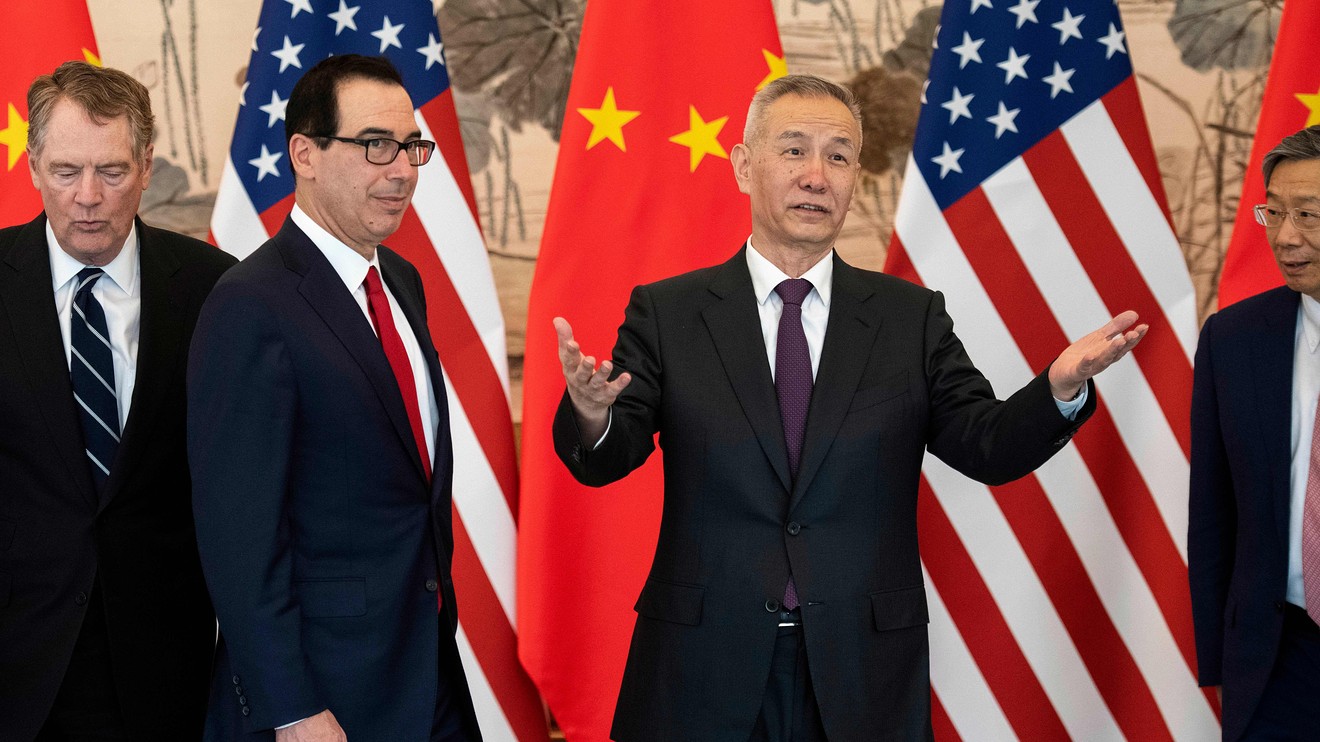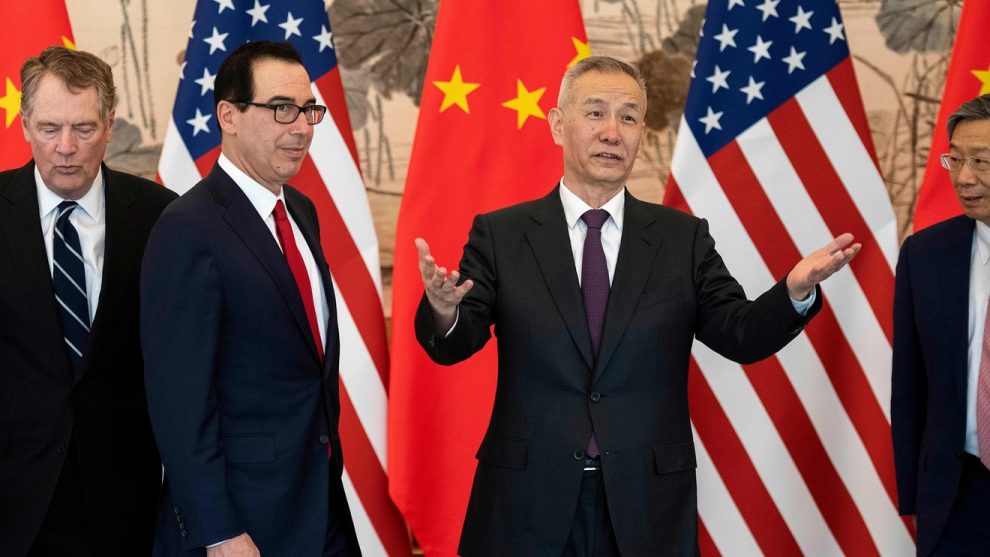
U.S. stocks closed sharply lower Monday, with the S&P 500 and the Dow logging their worst day since Jan. 3, as China moved to raise tariffs on U.S. goods and take other retaliatory measures after Washington last week increased duties on Chinese imports.
How did the benchmark indexes fare?
The Dow Jones Industrial Average DJIA, -2.38% tumbled 617.38 points, or 2.4%, to 25,324.99 and the S&P 500 index SPX, -2.41% dropped 69.53 points, or 2.4%, to 2,811.87. The Nasdaq Composite Index COMP, -3.41% sank 269.92 points, or 3.4%, to 7,647.02, marking its biggest one-day loss for 2019.
What drove the market?
Tensions that drove volatility for stocks last week returned as investors weighed an escalating tariff fight that could pose risks to the U.S., Chinese and global economies.
Check out: Here are the stocks to buy if an all-out U.S.-China trade war erupts, says Goldman
After raising tariffs on $200 billion worth of annual Chinese imports to 25% from 10% on Friday, the Trump administration said it was ready to impose higher tariffs on another roughly $300 billion of goods, or nearly all the remaining products Americans buy from the world’s second-largest economy.
Need to Know: Almost time for investors to take ‘major defensive action,’ fund manager warns
On Monday, Chinese officials announced retaliatory tariffs against the U.S., hitting $60 billion in annual exports to China with new or expanded duties that could reach 25%.
In several tweets over the weekend and early Monday, President Donald Trump argued that the U.S. was in an advantageous position on trade, though White House economic adviser Larry Kudlow admitted Sunday that “both sides” will feel the pain.
See: Here’s how hard the tariff fight could hit the economy
Chinese state-ran media over the weekend published several editorials blasting the U.S. stance and vowed that Beijing would stand firm in the talks.
Also read: Chinese media says ‘fierce U.S. offensive’ over trade won’t work
Stocks did come off session lows after Trump told reporters during an afternoon Oval Office meeting with Hungarian Prime Minister Viktor Orban that he would meet Chinese President Xi Jinping next month at a Group of 20 summit and that he hadn’t made a decision on whether to impose tariffs on another swath of Chinese goods.
Trump Today: President anticipates ‘fruitful’ meeting with Xi as he holds fire on new tariffs
What Fed speakers were in focus?
Fed Vice Chairman Richard Clarida gave a speech Monday morning on the central bank’s ongoing review of its overall monetary policy strategy, saying “we expect to make our conclusions public in the first half of 2020.”
Minneapolis Fed President Neel Kashkari told CNBC that he’s not calling for an interest-rate cut, but that he might change his mind if he saw jobs growth “really slowing down.” Kashkari isn’t a voting member of the rate-setting Federal Open Market Committee this year.
What were strategists saying?
“The escalation of trade tensions is likely to weigh on risk assets quite meaningfully in the next few weeks and months because the year-to-date rally was build on two premises: no escalation of trade tensions, and global policy easing,” said Alessio de Longis, portfolio manager for the global multiasset group at OppenheimerFunds.
“One of these pillars has been taken away, and that’s even more important because we are also dealing with the negative underlying force of deteriorating economic data.”
“Investors are increasingly worried an anticipated second-half profit rebound may now evaporate as President Trump’s threat to tariff the remaining $325 billion in Chinese imports would disproportionately target consumer products like iPhones, thereby posing a greater threat to the consumption-driven U.S. economy,” wrote Alec Young, managing director of global markets research at FTSE Russell, in an email.
Read: Why the stock market is at the mercy of the U.S. consumer
“On the heels of 2019’s historic rally, valuations are no longer depressed, making it harder for equities to shrug off looming macro risks,” he added. “With the ultimate trade outcome inherently uncertain and difficult to model or predict, investors are selling first and asking questions later. More globally exposed, cyclical industries like technology and industrials are proving most vulnerable.”
“Any good will to risk assets on Friday has faded through Asia, and there the preservation of capital is the overriding theme, although there is absolutely no panic,” said Chris Weston, head of research at Pepperstone.
“Protectionism and the impact that can have on demand can be hard to model, and it feels that with these dynamics in play the market will further de-risk, with traders wanting a return of their equity, as opposed to on their equity,” Weston added.
Which stocks were in focus?
Shares of several companies perceived as sensitive to rising U.S.-China trade tensions were under pressure before the start of trade Monday, including Apple Inc. AAPL, -5.81% semiconductor firm Advanced Micro Devices Inc. AMD, -6.15% and Intel Corp. INTC, -3.12%
Read: Here are Monday’s worst stock-market performers as U.S.-China trade dispute escalates
In addition to China concerns, the U.S. Supreme Court ruled that Apple customers can proceed with an antitrust lawsuit challenging the company’s exclusive control over the marketplace for iPhone apps.
Shares of Apple tanked 5.8%, AMD shares tumbled 6.2% and Intel shares fell 3.1%.
See: Apple stock falls through key chart levels toward an official correction
Uber Inc. UBER, -10.75% shares slumped 11% a day after the ride-hailing firm made its debut on the New York Stock Exchange Friday. After pricing at $45 per share, Uber stock closed down 7.6% at $41.57 Friday.
How did other markets trade?
Trade worries weighed on Asian markets, where the Shanghai Composite SHCOMP, -1.21% closed down 1.2% and other major indexes logged losses of 1% or more. Europe followed suit with the Stoxx Europe 600 SXXP, -1.21% down 1.2%.
The U.S. dollar DXY, +0.05% traded mostly flat relative to its peers, while gold GCM9, -0.04% settled higher and oil prices CLM9, -0.10% climbed after Saudi Arabia said two oil tankers were attacked near the Strait of Hormuz early Sunday.
See: ‘Sabotage’ attacks on Saudi oil tankers put Strait of Hormuz back in spotlight
—Barbara Kollmeyer contributed to this article
Providing critical information for the U.S. trading day. Subscribe to MarketWatch’s free Need to Know newsletter. Sign up here.






